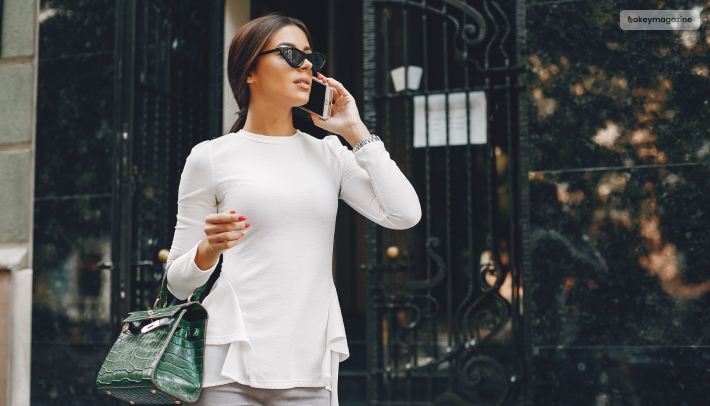
Is It Ok To Wear White After Labor Day?
If you had a childhood just like mine, you would know how every Easter, we used to wake up to pull out a new pair of white Sunday shoes and wear them everyday for the rest of the upcoming weeks till Labor Day finally came. And from then on, it was only dark shoes till the next easter.
Years later, you may have questions as to why that rule was followed. Why could we not wear white after Labor Day? What was the story behind it? Who was the first person who came up with the news?
Well, I have the answer to all of your questions. In this article, we shall dig deep into the reasons why we had to maintain the no white after Labor Day rule. So, without any more delay, let us get started.
Where Did The No White After Labor Day Norm Come From?

It is nothing but an unofficial etiquette rule that has been followed for years, which held that white garments were only to be worn during the summers, which would officially come to a close on Labor Day once the national holiday was established in 1894.
Read More: Is It Ok To Use Mucinex To Get Pregnant?
Who Came Up With This Said Rule?
To be precise, no group or individual came up with this rule of not wearing anything white after Labor Day. In fact, there are a couple of historical explanations as to how to start back in the 1800s.
For one, wearing colors like white is the best way to stay cool during the summer.
“Not only was there no air-conditioning, but people did not go around in T-shirts and halter tops. They wore what we would now consider fairly formal clothes,”
says Judith Martin, aka Miss Manners.
“And white is of a lighter weight.”
White was also fashionable for the well-to-do Americans during the summer holiday. It was a contrast from all the darker hues that were worn by the people belonging to the working class in the urban areas to be able to befit their daily labor.
“By the end of the 19th century, upper-class Americans escaped the summer heat of the city by retreating to the countryside or seaside, where white clothing remained free of the inevitable grime of the increasingly industrialized urban centers,”
says Amanda Halley, the popular fashion historian who is the core source of The Ultimate Fashion History.
“This was a sartorially social divide—only those who could afford to wear white could wear white. Not only did the wealthy summer in the far-cleaner countryside but should their beautiful white dresses get dirty, they had servants to launder them.”
Old Money Vs. New Money
While there is no solid proof of who established this rule, there are some vague theories about it. One of which says that this rule was developed by women belonging to old money. They came up with the saying that they would not be wearing white after Labor Day. This way, they understood (nominalization) who the women belonging to the inner crust circle and who was the one who was only pretending.
Staying Cool
This is a more practical approach to not wearing white after Labor Day. Back in the day, there was no air conditioning. Therefore, the only way people would keep themselves cool was by wearing light colored clothes, mainly white. However, as the summer went away, they would shift to darker colors, which would keep them warm in the terrible American winters. Because Labor Day was the event marking the end of summer, people generally would not wear white after it. This is exactly how the rule came into action.
Summering In Luxury?
This is the final theory that blends both practicality and classism to suggest yet another reason behind this rule. This theory says that if anyone was to wear white before Labor Day, they would signal that they were ultra-rich and owned a luxurious summer house at the beach. White was mainly a color that people wore during vacations.
If anyone was wearing white after summer, people would consider them not rich enough to know that they were only to wear white during summers while lounging with other millionaires at a fancy beach house party. However, those days are no longer here where you have to follow this rule.
Is The No White After Labor Day Rule Still Persistent?

Well, the answer is no. There is no hard and fast rule that you need to follow. The no-white-after-labor-day rule applies to this date. This means you may incorporate the most beautiful pieces in the color white in your autumn and winter fashion.
As per the Emily Post Institute, you can easily wear white everyday of the year. What is more important is the fabric than the color.
How Should You Put On White After Labor Day?
There are no such rules that you have to follow to embrace white after Labor Day. In fact, you may style your whites in anyway you wish to. If you want, you may even wear all the whites you want in the whole world.
As the temperature starts to fall, it is better if you just put away all of your white linens or spaghetti strap shirts but keep the other staple whites. You may easily transition them into your fall fashion.
Pairing white blouses or sleeved shirts with denim or white pants. Simply styling a white dress, white boots, or just your plain white sneakers is the best thing you can do to up your fall style. White acts as the best contrast to the dark, warm tones of fall. Fall fashion has multiple layers to it. Adding a layer of white among those tones would only make you look more fashionable and elegant.
When the temperatures start to get freezing, you have the best of the winter whites. There are white knit, white cashmere, cable sweaters, and white turtlenecks that you may easily sport till the temperature starts to rise again.
Read More: Is It Ok To Experience Skin Purging After Using A New Product?
To Conclude
While this rule existed back in the 1800s, there is no reason for you not to wear white after Labor Day. White is a beautiful color that would rock all your autumn and winter outfits and look good with everything.
There is no solid proof as to why this came up in the very first place. People used to swear by it back in those days. But not anymore. White is elegant, it is classy, and you may wear it anytime you want.
For More Interesting Articles Click Below!!



















Post Your Comment